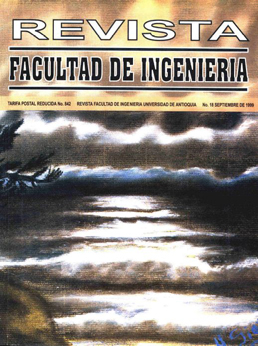Diseño y simulación de un control de velocidad y tensión para un generador sincrónico-Parte II
DOI:
https://doi.org/10.17533/udea.redin.325822Abstract
El objetivo de este trabajo es proponer un procedimiento para simular el generador sincrónico (ParteI) y diseñar controladores óptimos (Parte I), con la ayuda de herramientas de fácil trabajo y amplia divulgación como son MATLAB y su módulo de simulación SIMULINK.Downloads
References
. KIMBARK, E. W. Power system stability. New York. Wiley. 1948.
. HINDMARSH, J. Máquinas eléctricas y sus aplicaciones. Bilbao. Urmo. 1974.
. CONCORDIA, C. Synchronous machines. New York. Wiley. 1951.
. KRAUSE, P. C. Analyisis of electric machinery. New York. Me Graw-Hil. 1986.
. ANDERSON, P. C. y FOUAD, A. A. Power system control and stability. lowa. The lowa state university press, 1977.
. ADKINS, B. y HARLEY, R. G. The general theory of alternating current machines, Chapman & Hall, London, 1975. DOI: https://doi.org/10.1007/978-1-4899-2907-5
. HABIBULLAH, B. and YU, Y. «Physically realizable wide power range optima! eontrollers for power systems», En: IEEE Trans. on PAS. Sep./Oet. 1974. pp 1498-1506. DOI: https://doi.org/10.1109/TPAS.1974.293880
. ROHRS, C. E., MELSA, J. L. y SCHULTZ, D.G. Sistemas de control lineal. México. Me Graw-Hill. 1994.
. OGATA, K. Ingeniería de control moderna.Prentiee-Hall. 1982.
. Yu, Y. Electric Power system dynamics. New York. Academie press. 1983.
. RAMAMOORTY, M. and ARUMUGAM, M. «Design of optimal regulators for synchronous machines». En: IEEE trans on PAS. Feb 1973. pp 269-277. DOI: https://doi.org/10.1109/TPAS.1973.293623
. ALVAREZ, L, OSORlO M. «Determinación de los parámetros para modelar la máquina sincrónica», En: Proyecto de grado. Medellín. Universidad de Antioquia (Facultad de Ingeniería). 1991.
. SHAIAN, B and HASSUL, M. Control system design using Matlab. New Jersey. Prentice Hall. 1993.
. BOTERO C, Hector A. «Diseño y simulación de un control de tensión para un generador sincrónico «En: Proyecto de grado, Medellín. Universidad de Antioquia (Facultad de Ingeniería). 1995.
. The MATH WORKS Inc. The Student Edition of SIMULINK. New Jersey. Prentice Hall.g 1996.
Downloads
Published
How to Cite
Issue
Section
License
Revista Facultad de Ingeniería, Universidad de Antioquia is licensed under the Creative Commons Attribution BY-NC-SA 4.0 license. https://creativecommons.org/licenses/by-nc-sa/4.0/deed.en
You are free to:
Share — copy and redistribute the material in any medium or format
Adapt — remix, transform, and build upon the material
Under the following terms:
Attribution — You must give appropriate credit, provide a link to the license, and indicate if changes were made. You may do so in any reasonable manner, but not in any way that suggests the licensor endorses you or your use.
NonCommercial — You may not use the material for commercial purposes.
ShareAlike — If you remix, transform, or build upon the material, you must distribute your contributions under the same license as the original.
The material published in the journal can be distributed, copied and exhibited by third parties if the respective credits are given to the journal. No commercial benefit can be obtained and derivative works must be under the same license terms as the original work.










 Twitter
Twitter